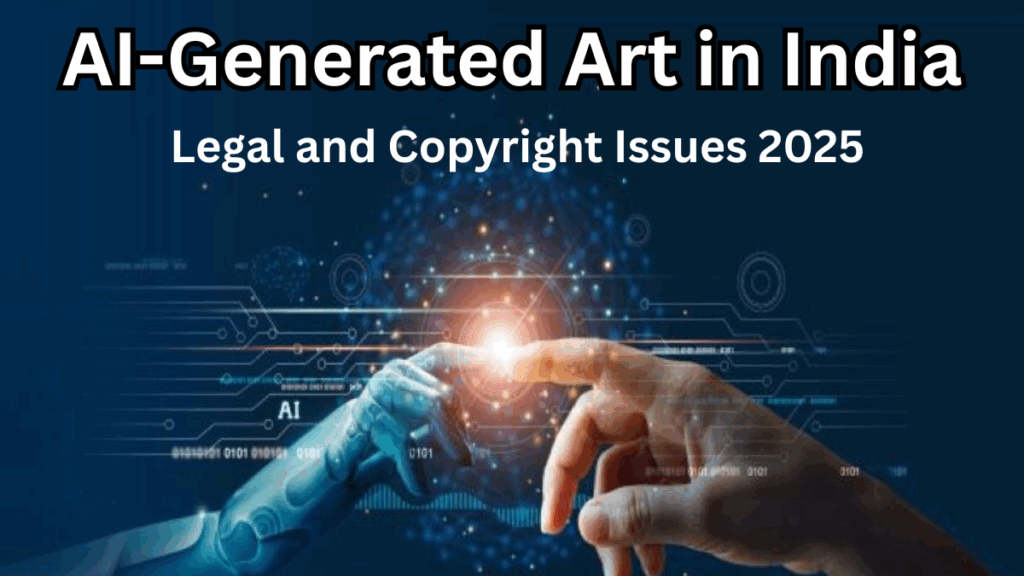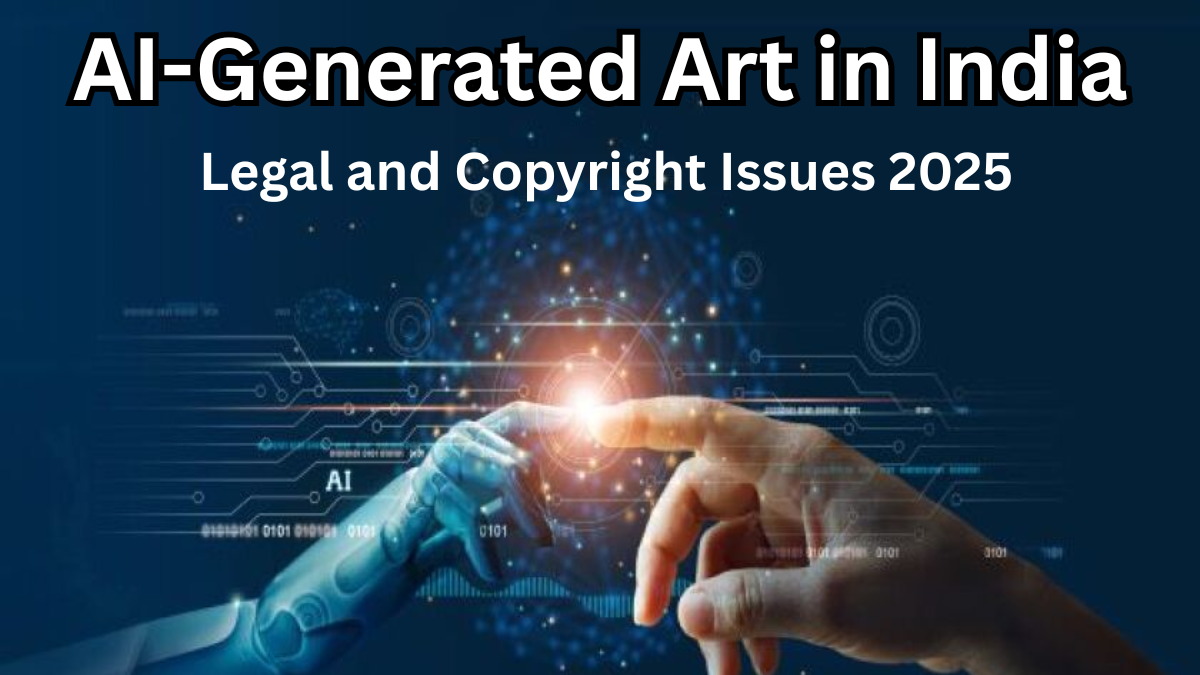Artificial intelligence is reshaping the way we create and consume art. From digital paintings to music compositions, AI-generated art in India is gaining remarkable traction. But as this creative wave rises, one big question remains — who owns the rights to AI-generated works?
With copyright law 2025 bringing significant updates, artists, developers, and businesses must understand how these changes impact AI-created content.

What is AI-Generated Art?
AI-generated art refers to creative works — such as paintings, illustrations, or even poetry — created using artificial intelligence tools. Unlike traditional artworks, these creations often lack direct human authorship, making ownership and copyright attribution complex.
Examples of AI-generated art in India include:
-
AI-assisted digital illustrations for brands
-
Generative music compositions used in films and ads
-
Algorithm-driven visual designs for gaming and apps
Why is Copyright a Challenge for AI-Created Works?
Traditionally, copyright protects works created by humans. But with AI, the line between creator and tool becomes blurred.
Key challenges include:
-
Ownership disputes – Should the copyright go to the AI programmer, the user, or no one?
-
Originality concerns – Is AI-generated art truly “original” if it relies on datasets of existing human-created works?
-
Global inconsistency – Different countries treat AI-generated works differently, leaving creators in India uncertain.
What Does Copyright Law 2025 Say About AI-Generated Art?
In 2025, India introduced new copyright law provisions to address AI-related issues. While still evolving, these updates aim to balance innovation with the protection of human creators.
Quick breakdown:
Aspect |
Provisions under Copyright Law 2025 |
|---|---|
Authorship |
AI cannot be considered an “author.” Ownership goes to the human or entity directing the AI. |
Derivative Works |
AI works using copyrighted datasets need proper licensing. |
Commercial Use |
Clear licensing agreements required for businesses using AI-generated works. |
Liability |
Developers and users share responsibility for copyright violations. |
This framework ensures that while AI-generated art in India thrives, human creators remain protected.
How Should Artists and Businesses Respond?
To stay compliant and avoid disputes, artists, brands, and developers using AI for creative purposes should:
-
Sign clear contracts defining ownership of AI-generated content.
-
Seek proper licenses for datasets used in AI tools.
-
Document creative input to establish human involvement in the work.
-
Consult legal experts to align with the updated copyright law 2025.
The Road Ahead
AI in art is here to stay, and India’s creative ecosystem is rapidly adapting. With evolving legal frameworks, creators can explore this exciting frontier while ensuring that innovation doesn’t compromise ethical and legal boundaries.
FAQs
1. Who owns AI-generated art in India?
Under copyright law 2025, the ownership goes to the human or organization directing the AI, not the AI itself.
2. Can AI-generated art be copyrighted?
Yes, but only if there’s a significant human contribution in the creative process.
3. Do businesses need licenses for using AI-generated art?
Absolutely. Any AI work created using copyrighted datasets or for commercial purposes needs proper licensing.
4. Is India aligned with global copyright trends?
India’s copyright law 2025 aligns with global developments but is still evolving to address cross-border ownership and licensing issues.
Click here to learn more
